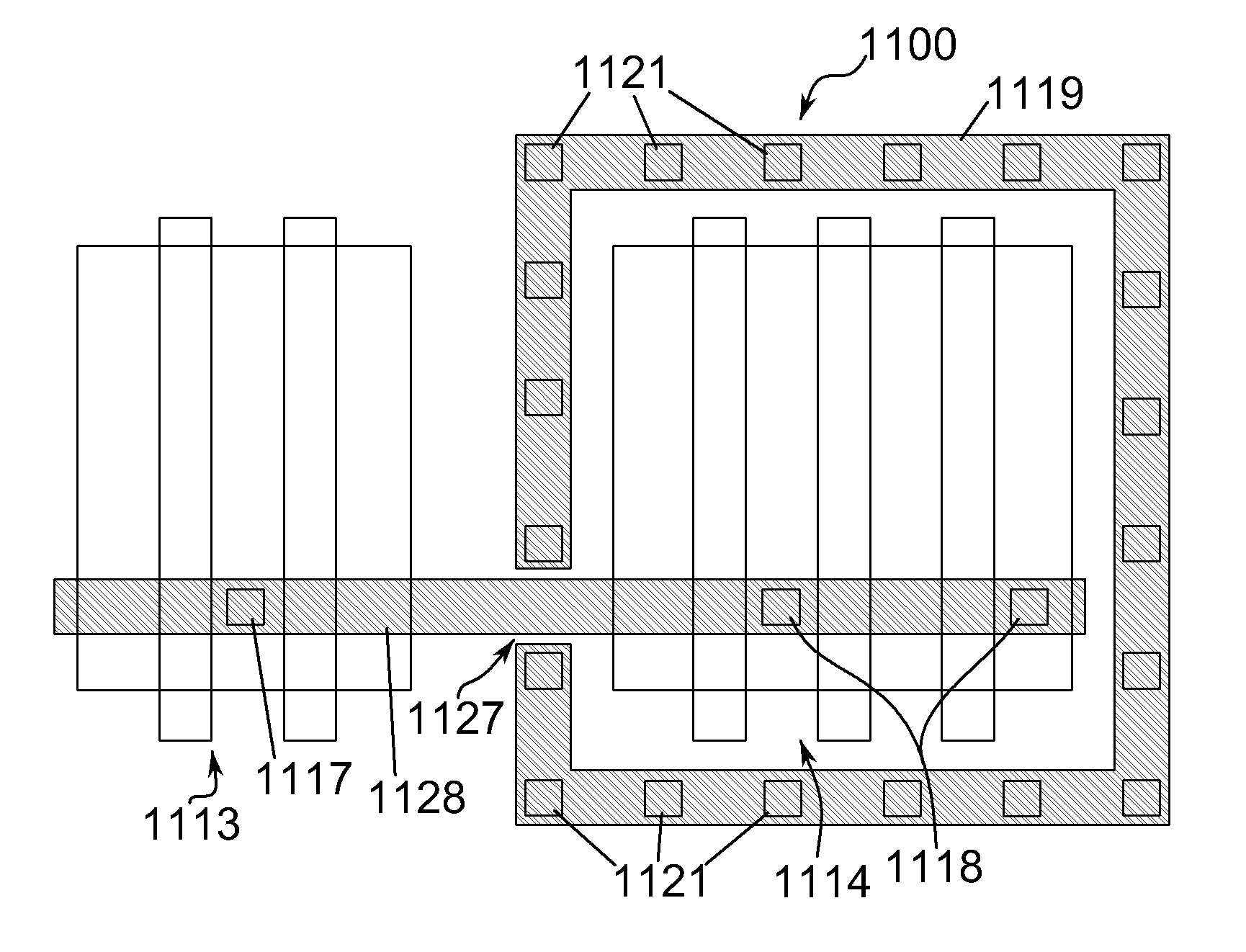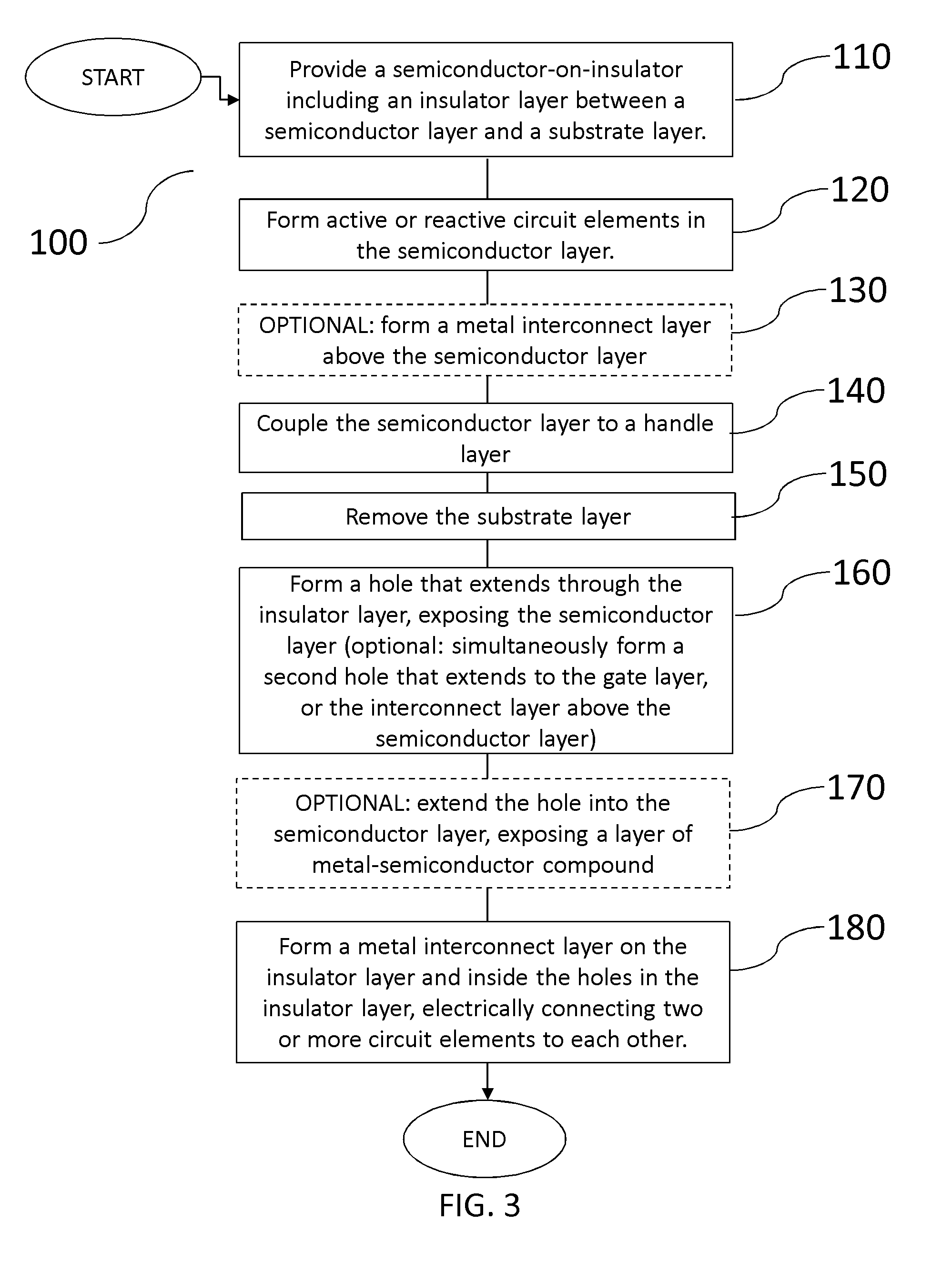Integrated Circuit Assembly with Faraday Cage
a technology of integrated circuits and faraday cages, which is applied in the direction of electrical equipment, semiconductor devices, semiconductor/solid-state device details, etc., can solve the problems of critical affecting the performance and cost of integrated circuit products, and achieve the effect of reducing the capacitance to ground
- Summary
- Abstract
- Description
- Claims
- Application Information
AI Technical Summary
Benefits of technology
Problems solved by technology
Method used
Image
Examples
Embodiment Construction
[0026]High-speed, high performance integrated circuits are often fabricated using silicon-on-insulator (SOI) technologies. SOI technologies also lend themselves to layer-transfer techniques, where the active layer of the SOI is transferred, using bonding and etch-back methods, to a different substrate. This method may have advantages of lower capacitance and higher speed, easier thermal management, and easier access to the body regions of SOI transistors. An example of such a process is described in U.S. Pat. No. 8,357,935 entitled, “Silicon-on-insulator with back side connection”, owned by the assignee of the present application and filed on Apr. 28, 2012, which is incorporated herein by reference in its entirety. Layer transfer techniques may also be used to form circuits on fully insulating or transparent substrates, which may be advantageous in opto-electronic applications, for example.
[0027]Transferring the active layer of an integrated circuit also can expose the surface of th...
PUM
 Login to View More
Login to View More Abstract
Description
Claims
Application Information
 Login to View More
Login to View More - R&D
- Intellectual Property
- Life Sciences
- Materials
- Tech Scout
- Unparalleled Data Quality
- Higher Quality Content
- 60% Fewer Hallucinations
Browse by: Latest US Patents, China's latest patents, Technical Efficacy Thesaurus, Application Domain, Technology Topic, Popular Technical Reports.
© 2025 PatSnap. All rights reserved.Legal|Privacy policy|Modern Slavery Act Transparency Statement|Sitemap|About US| Contact US: help@patsnap.com



